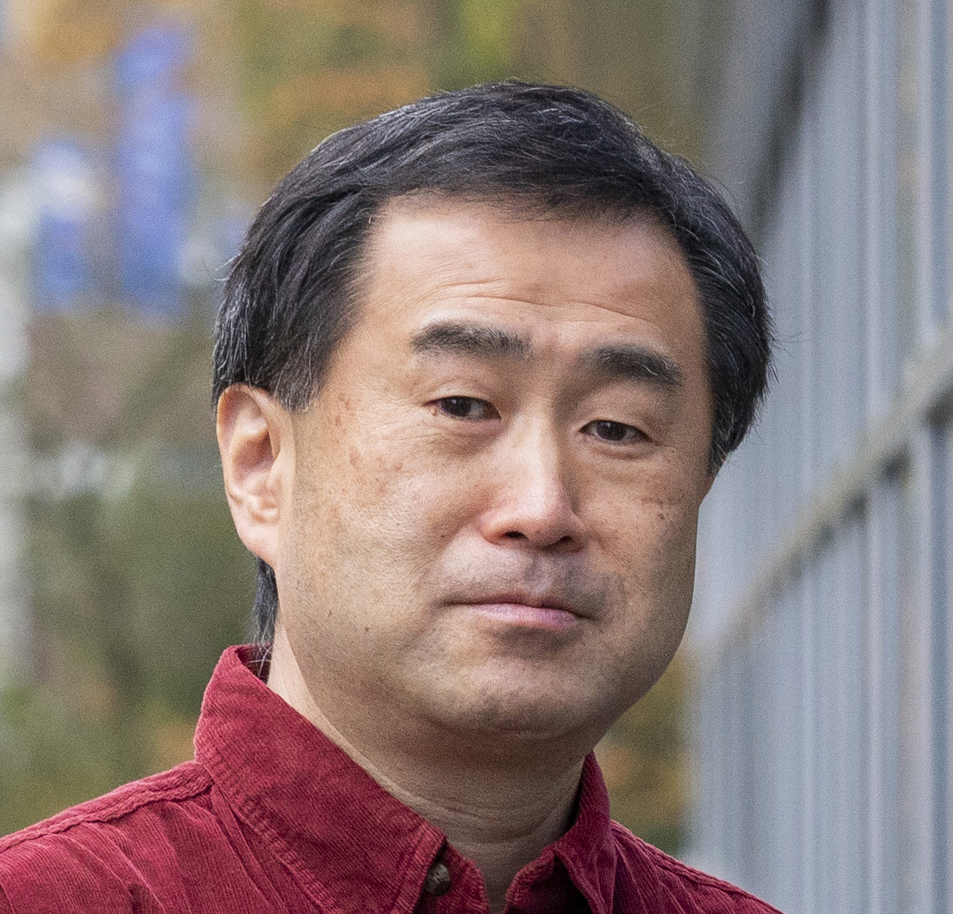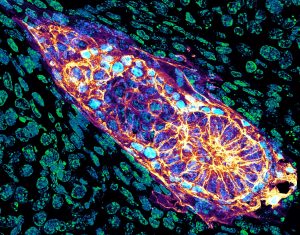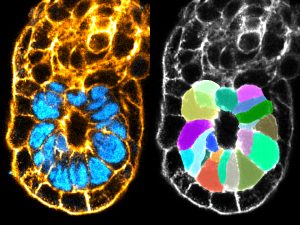
M.D.,Ph.D. Professor Takashi Hiiragi
The Hiiragi laboratory studies robustness in development and aims to understand the design principle of self-organising multi-cellular systems.
Self-organisation is a defining feature of living systems and entails complex interplay between molecular, cellular and mechanical signals across various spatio-temporal scales. Using early mammalian embryos as a model, we adopt a variety of methods including genetics, molecular and cell biology, microscopy, biophysics, engineering and modelling, to investigate how self-organised forms and patterns emerge from a spherical mass of cells.
Research and Education
Mammalian eggs lack polarity and symmetry is broken during early embryogenesis. Our studies revealed that morphogenesis and gene expression are highly variable between cells and embryos during this period. Determining how embryos develop with reproducible form despite such variability remains a fundamental question in mammalian development. We established a multi-disciplinary framework integrating biology, physics and mathematics, which showed that feedback interactions between cell and tissue mechanics, polarity, and fate robustly control size and pattern of the early mouse embryo. We will build on our mechanistic understanding, and integrate the self-organisation model into the context of tissue-tissue and embryo-uterus interactions that were revealed by our recent studies.
The size of embryos and their organs is precisely controlled in each species, despite the inherent variabilities during morphogenesis and growth. The mechanism underlying this remarkable precision remains unknown. Using our newly developed ex vivo systems, we will dissect cell and tissue growth dynamics, with the goal of understanding how embryo size is sensed, and how this feeds back to control cellular growth dynamics.
 Mouse embryo implanting into the uterine tissue
Mouse embryo implanting into the uterine tissue
 Cellular dynamics of peri-implantation embryos revealed by machine-learning-based image analysis
Cellular dynamics of peri-implantation embryos revealed by machine-learning-based image analysis
Publications
- Bondarenko, V., Nikolaev, M., Kromm, D., Belousov, R., Wolny, A., Blotenburg, M., Zeller, P., Rezakhani, S., Hugger, J., Uhlmann, V., Hufnagel, L., Kreshuk, A., Ellenberg, J., van Oudenaarden, A., Erzberger, A., Lutolf, M. P. and Hiiragi, T. Embryo-uterine interaction coordinates mouse embryogenesis during implantation. The EMBO journal (2023) 42(17), e113280.
- Ichikawa, T., Zhang, H. T., Panavaite, L., Erzberger, A., Fabrèges, D., Snajder, R., Wolny, A., Korotkevich, E., Tsuchida-Straeten, N., Hufnagel, L., Kreshuk, A. and Hiiragi, T. A robust ex vivo system to study cellular dynamics underlying mouse peri-implantation development. Developmental Cell (2022) 57, 373-386.e9.
- Chan, C.J., Costanzo, M., Ruiz-Herrero, T., Mönke, G., Ryan, P., Bergert, M., Diz-Muñoz, A., Mahadevan, L. and Hiiragi, T. Hydraulic control of mammalian embryo size and cell fate. Nature (2019) 571(7763), 112-116.
- Korotkevich, E., Niwayama, R., Courtois, A., Friese, S., Berger, N., Buchholz, F. and Hiiragi, T. The apical domain is required and sufficient for the first lineage segregation in the mouse embryo. Developmental Cell (2017) 40(3), 235–247.e7.
- Maître, J.-L., Turlier, H., Illukkumbura, R., Eismann, B., Niwayama, R., Nedelec, F. and Hiiragi, T. Asymmetric division of contractile domains couples cell positioning and fate specification. Nature (2016) 536, 344–348.
Laboratory
Professor: Takashi Hiiragi
Assistant Professor: Takafumi Ichikawa
TEL: 075-753-9895
e-mail: hiiragi.takashi.7w@kyoto-u.ac.jp
URL: https://ashbi.kyoto-u.ac.jp/lab-sites/hiiragi/en/
